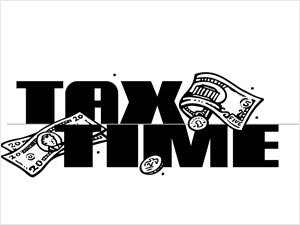Tax planning: Here is a complete guide for salaried employees

Income assets
- Public provident fund
- Bank fixed deposits (the 5 yr thing)
- National Savings Certificate (NSC)
Growth assets
- ULIPs
- Pension Plan
- Mutual fund-ELSS
It is now quite obvious that young and middle aged people should look at growth assets only. ELSS wins hands down over ULIPs since it has far lower costs and charges loaded onto it. This makes it one of the best tax saving instruments available.
What is ELSS?
An equity linked savings scheme (ELSS) is very similar to a diversified fund - it invests in the broad Indian equity market. It has no stated preference for sectors or themes - it chooses stocks based on the fund manager's research and hypotheses. An ELSS has a three-year lock-in period.
Here's how to choose (the rule of three):
- Avoid funds that have less than three years of track record.
- Avoid funds that have an asset base of less than Rs.300 crores. You can get this figure in the fund fact-sheet (available for download at the fund's site)
- Rank all ELSS in decreasing order of three-year returns. Choose one of the top three. Be aware, past performance may not be repeated in future.
Section 80G
If you pay a donation to any recognized charity or relief fund, a part of the donation can be claimed as a tax rebate. You need to submit the certificate of donation to HR.
A few organizations like the Prime Minister's Disaster Fund enjoy 100% deduction - which means the entire donation paid is deductible from your salary. However, most other donations including several religious organizations enjoy only a 50% deduction. If you pay Rs. 1,000 to such an organization, you can claim Rs. 500 as benefit.
Section 80CCG
This is the newly announced rebate from the government called Rajiv Gandhi Equity Savings Scheme (RGESS). Features are
One can invest a maximum of Rs 50,000.
- Tax rebate of 50%
- Only for individuals whose annual income is less than 10 lacs
- Investing in stocks for the first time
- Investing in BSE 100, CNX 100, PSUs, certain mutual funds and ETFs (list)
- Lock in of 3 year but can trade after 1 year
There is not much clarity in term of execution and procedure. May be you can give it a miss this year or wait for few more weeks to get complete clarity.
Recap- here is the check list of documents you need to submit to your HR
- In case you live in a rented apartment: 12 months rental receipt from owner
- In case you have home loan: Statement of housing loan with details of principal and Interest components
- Medical bills for the year if any
- Tuition fee receipt paid for your children if any
- Flight & train tickets for LTA claims
- Insurance premium receipts paid for the year
- NSC purchased in the year
- Mutual fund (ELSS) statement
- Mediclaim premium receipt
- Parents' mediclaim premium receipt
- Education loan statement (mentioning the interest component)
- Bank Fixed deposit receipts (the 5 year lock-in thing)
Be aware with the current crop of tax free bonds: Firstly it has nothing to do with tax rebate of Sec 80 CCF. Section 80 CCF (Rs 20,000) has been scrapped this year and you will not get any tax rebate on infrastructure bonds like the one you got last year. Hence do not fall for this trap.
Source: Fintotal































